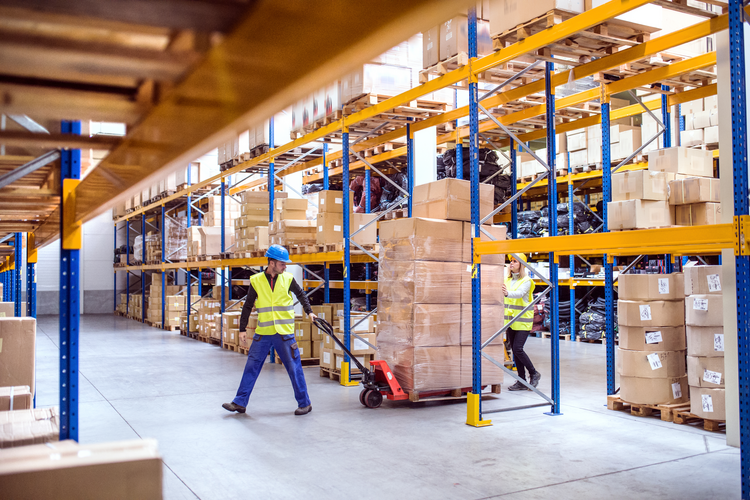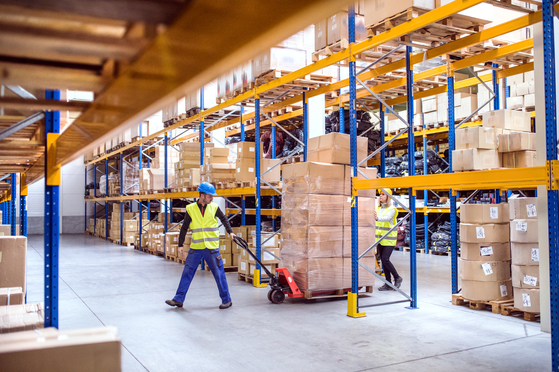Welcome to Thomas Insights — every day, we publish the latest news and analysis to keep our readers up to date on what’s happening in industry. Sign up here to get the day’s top stories delivered straight to your inbox.

The cost of warehousing in the U.S. is skyrocketing. What’s driving this sharp price increase, how is it impacting supply chains, and what can retailers and manufacturers do to mitigate the impact on their bottom lines?
What’s The Current State of Affairs?
A report released at the end of 2021 by real-estate firm CBRE Group Inc. found that the rental rates on expiring multi-year warehouses leases are increasing at a rapid rate.
According to the research, the cost to rent an industrial property is up by an average of 25% compared to the rates being paid at the end of five-year contracts that expired in 2021.
John Morris, industrial and logistics lead at CBRE, commented that the company has never seen rent increases this high. So, what’s driving this surge in cost?
Why Are Warehousing Costs So High?
Following the outbreak of COVID-19, consumer behavior transformed. The UN’s trade and development experts (UNCTAD) revealed that the e-commerce sector saw a dramatic rise in its share of all retail sales — from 16% to 19% in 2020. Meanwhile, in May 2021, it was reported that global e-commerce had risen to $26.7 trillion. In the U.S. alone, the knock-on effects of COVID-19 saw $105 billion added to the economy from e-commerce.
As a direct result, real estate firms enjoyed a wave of new, and highly lucrative, contracts as the demand for industrial space skyrocketed. CBRE Research has shown that $1 billion in incremental e-commerce sales will result in 1.25 million square feet of warehouse space demand. Indeed, many retailers spent the beginning of the pandemic scrambling to pivot their business models and adapting to the sudden and major changes in consumer demand by expanding and improving their e-commerce offerings.
Now, the retailers and manufacturers who had been shielded from expensive rental contracts by multi-year contracts face paying the same steep prices that were implemented during the pandemic.
Unfortunately for these businesses, Morris believes the demand for industrial space won’t let up any time soon, noting that at points during 2021, the U.S. national vacancy rates were at their lowest since 2002. Ultimately, real estate firms across the U.S. are feeling pretty confident in demanding significantly higher rates when it comes to renewing the contracts of their existing tenants. In February 2021, a Forbes article even went so far as to describe the rise of warehousing as “a steam train with no end in sight.”
How Is This Impacting the Supply Chain?
Supply chain professionals have had a very difficult time over the past couple of years, with shipping delays, the rising cost of raw materials and logistics and transportation services, increased tariffs, border closures, and factory shut-downs to contend with. At one point, port delays contributed to increases of more than 230% to ship a single 40-foot container from Shanghai to the Port of New York and the Port of Los Angeles.
The increase in warehousing costs, which typically represent 3-6% of a company’s total logistics spend, might not be the greatest expense, but it is yet another challenge for organizations to navigate.
How Are Organizations Responding to Rising Warehouse Costs?
Consumers today increasingly demand highly streamlined and highly efficient e-commerce services. As such, retailers cannot put themselves at risk of stockouts or fail to provide much-valued services including next-day or same-day delivery options. Product shortages brought on by the pandemic served as a stark reminder of the dangers of the just-in-time supply chain, and so reducing inventory levels in the U.S. to save warehousing costs is likely not an appealing option for the vast majority of businesses. These concerns are evidenced by the fact that warehousing costs are especially steep in population centers, in which there is a high number of consumers expecting a fast and consistent delivery service.
Instead, retailers might look to redistribute their inventory away from larger real estate companies and instead negotiate contracts with several smaller, and potentially more affordable, firms. Decentralizing warehousing locations is another viable option in some cases, as it reduces transportation costs and enables retailers to be more stringent about the kind of inventory they hold in different locations, based on consumer preferences.
Other organizations are opting to save themselves the headache and outsource their distribution and warehousing services. CBRE revealed that 3PLs (third-party logistics) doubled their year-to-date leasing volume between January and July of 2021.
Inevitably, some of the additional costs associated with warehousing and supply chain management are also being passed onto the consumer. In October 2021, U.S. consumer prices rose at the fastest pace in three decades as a result of inflation throughout the economy.
Whatever their chosen strategies, retailers and manufacturers across the U.S. must prepare to navigate rising warehousing costs for some time to come.
Image Credit: Halfpoint / Shutterstock.com


